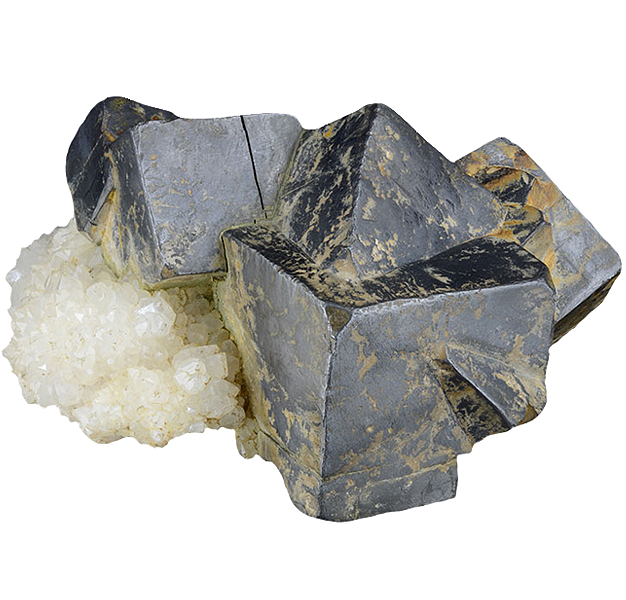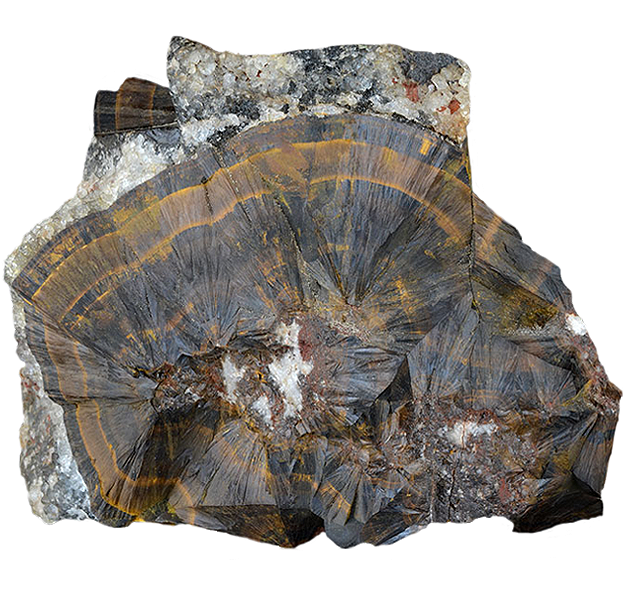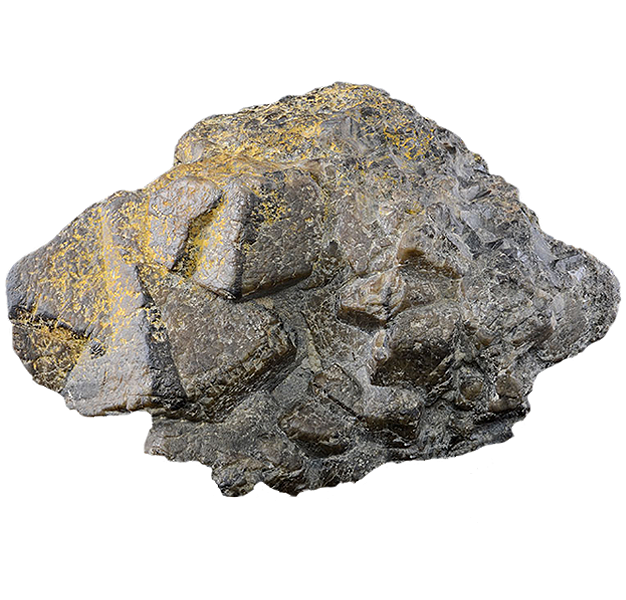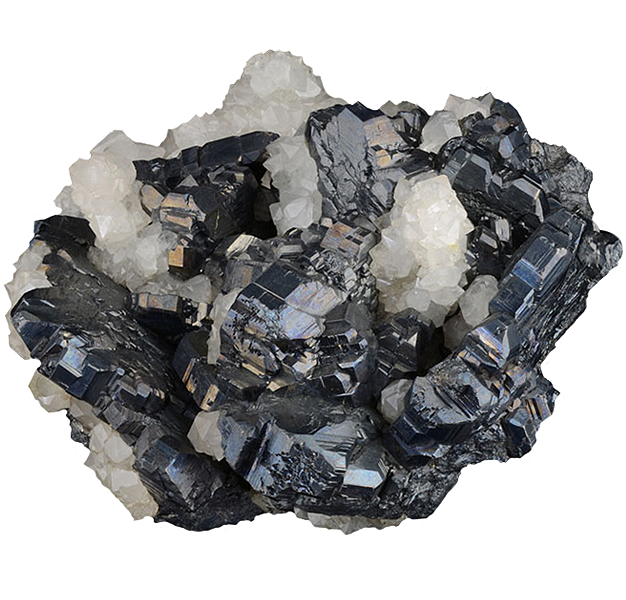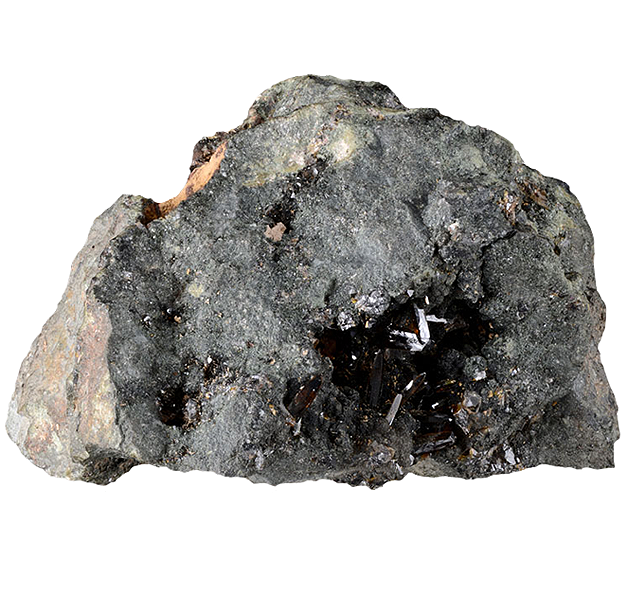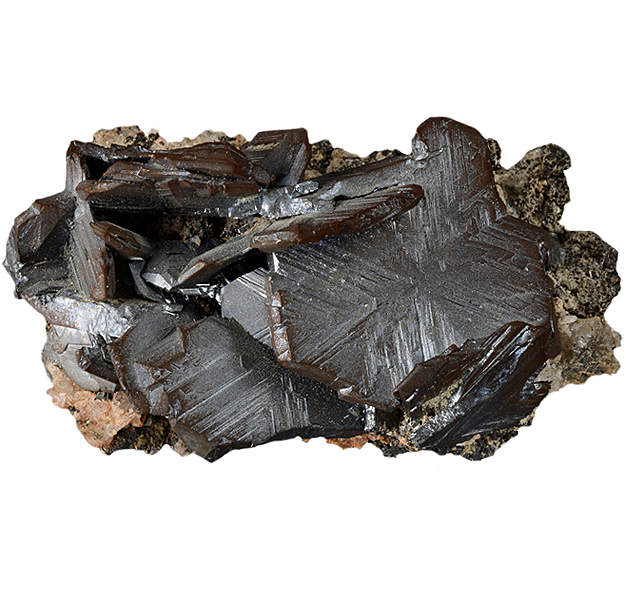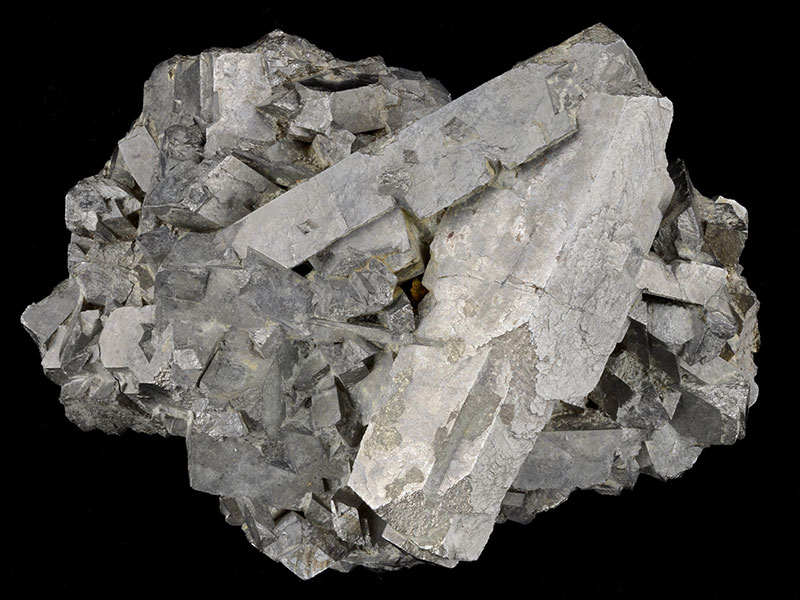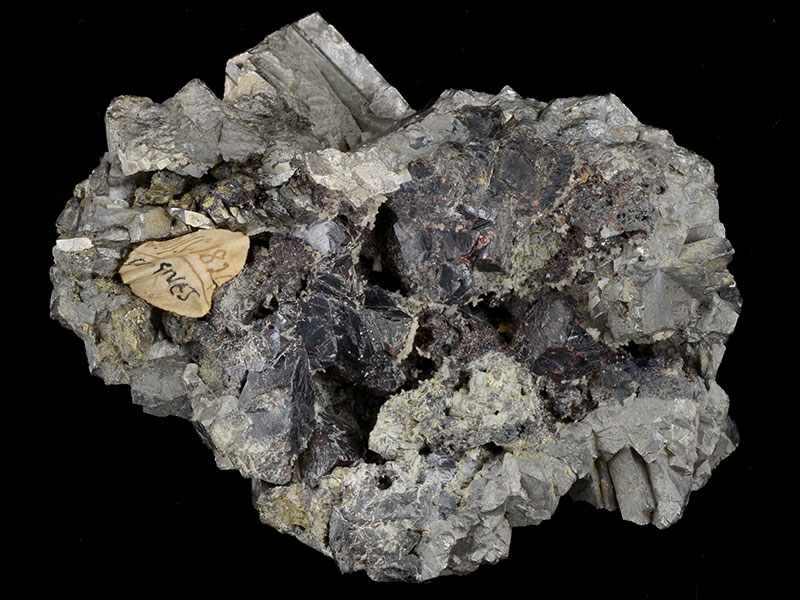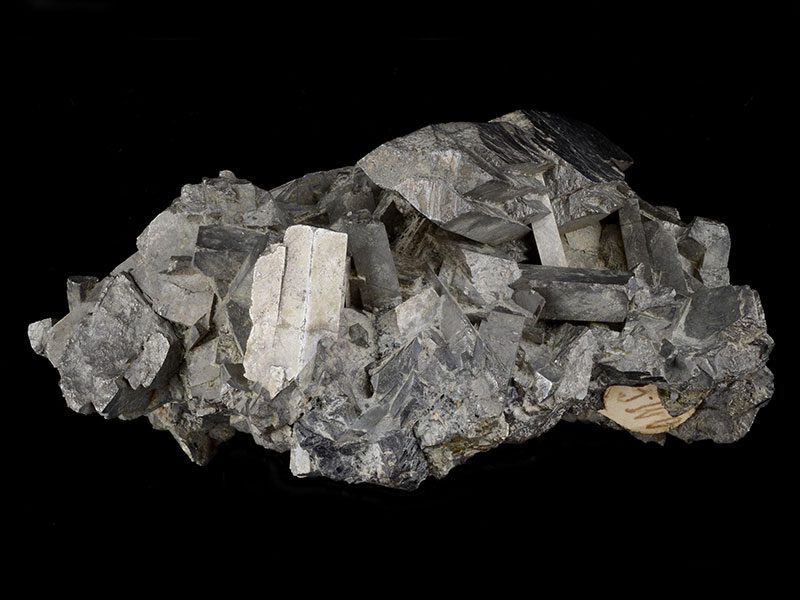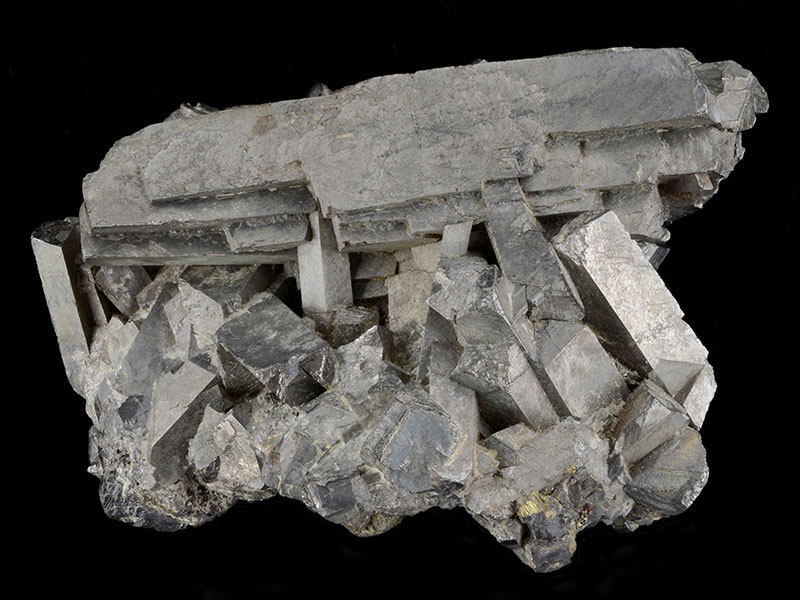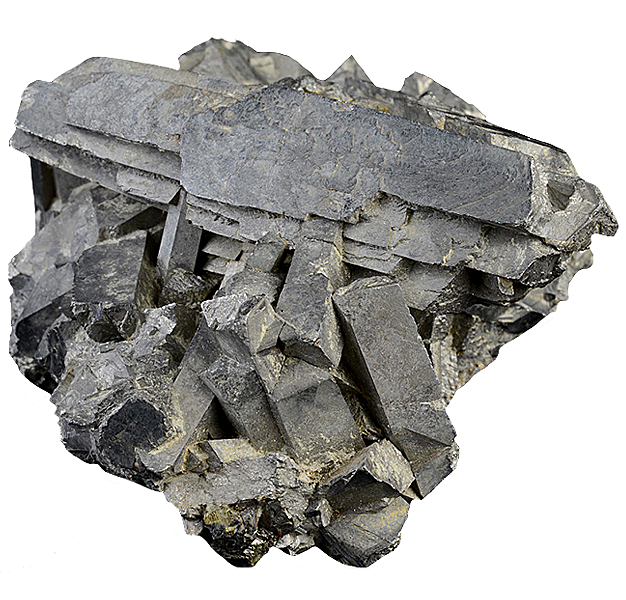
Fact sheet
Arsenopyrite contains arsenic, iron and sulphur. Originally it was a troublesome impurity mixed in with the tin and copper ores. To remove the arsenic and sulphur, the mixed ores were roasted at the mine site. The unwanted arsenic was driven off into the atmosphere as toxic arsenic trioxide gas. However, in the early 19th century new uses for arsenic were identified in pigments and pesticides. In order to capture the now valuable arsenic, labyrinthine flues were attached to the mines’ furnaces to cool the escaping arsenic trioxide and force it to be deposited as a solid white powder that could be collected and sold. Arsenic became the most important by-product of the mining industry in Cornwall with over half the world’s arsenic being produced by the 1870s.
This specimen of unusually coarse crystals of arsenopyrite, is from St Agnes and was acquired by the Royal Institution of Cornwall before 1881.
Chemical formula: FeAsS
Specimen no. TRURI: 801.1585
Location: St Agnes
Grid Reference: SW 72 50
Mindat http://www.mindat.org/min-305.html
This Collection focuses on Cornwall and West Devon’s mineralogical and mining heritage. The specimens it features are drawn from the collection of the Royal Institution of Cornwall (RIC) held at the Royal Cornwall Museum (RCM).
This collaborative project involving the RCM, the Cornish Mining World Heritage Site and The Open University explores how access to the RIC’s mineral collection and the stories it can tell can be widened using digital technology. It includes radioactive minerals from Cornwall that would otherwise be inaccessible to the public for health and safety reasons.
Sample details
More from this collection
